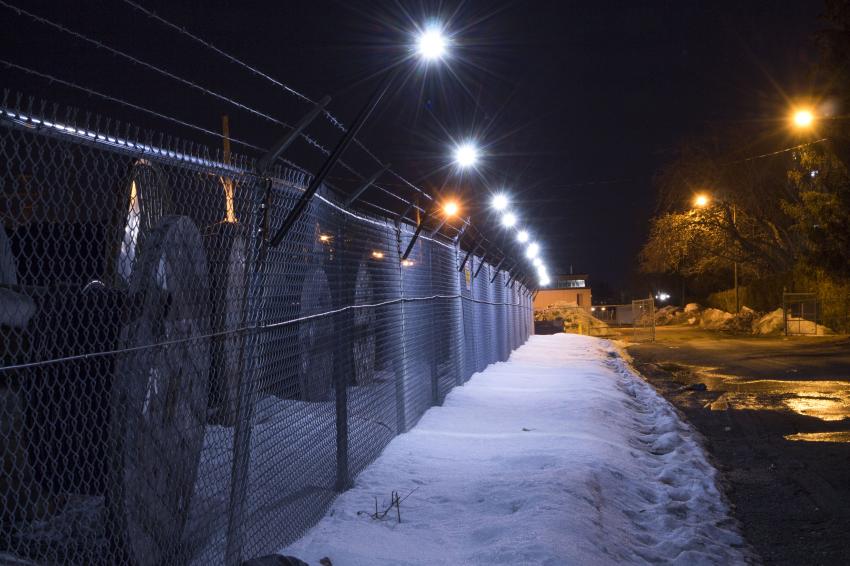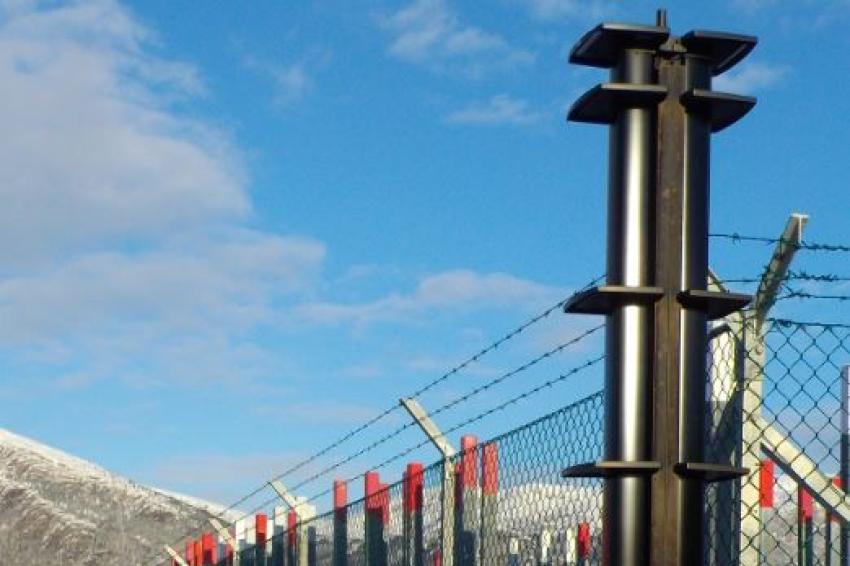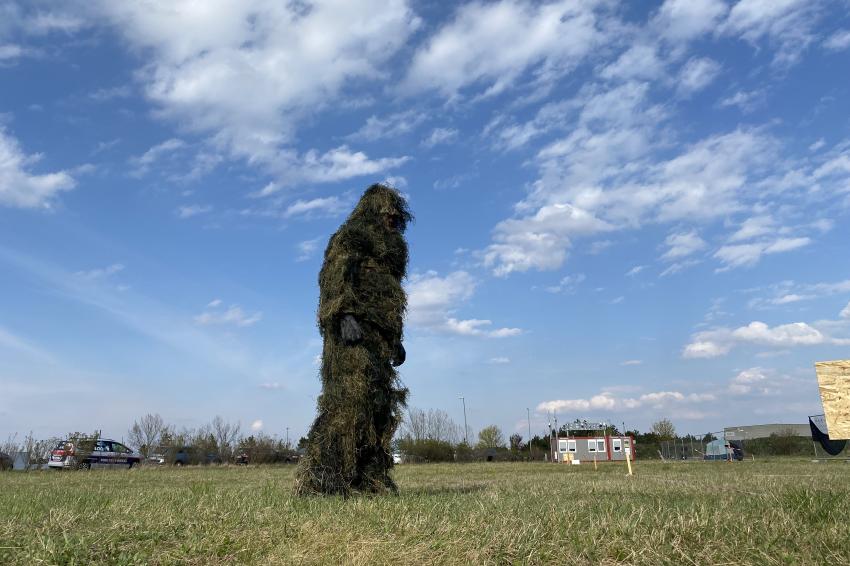Greatest Challenges in Critical Infrastructure
05.05.2023 - What providers need to know and do to safeguard premises of critical infrastructures.
The European Union has established Council Directive 2008/114. It is a key pillar of the European Programme for Critical Infrastructure Protection (EPCIP). It is there to direct identifying and designating European Critical Infrastructures and to protect them from all kinds of threats, intentional and accidental, as well as natural disasters. The latest addition to the directive came out as a proposal in 2020, together with an impact assessment. According to the European Parliament, “The proposal aims to enhance the resilience of European critical entities, by shifting from an assets-focused approach to a systems-focused approach, expanding the directive’s scope, and aligning the new directive with a proposed revision of the EU Network and Information Security Directive (‘NIS 2’).”
Another aim for a more regulated protection of Critical Infrastructure was in Germany most recently. At the end of 2022, the Federal Cabinet of Germany has adopted key points of the so-called KRITIS (Critical Infrastructure) umbrella law. This law is awaited with great expectations and acclaim because it aims to close the gaps in the physical protection of critical infrastructure and to increase the resilience of our society.
What is Critical Infrastructure?
According to the BSI (Federal Office for Information Security in Germany), Critical Infrastructures are classified by “important significance” for a state community. It means that failure or impairment of these organizations and facilities would result in lasting supply bottlenecks and grave disruptions to public safety or other dramatic consequences.
Critical Infrastructure sectors are:
- Energy
- Health
- Information technology and telecommunications
- Transport and traffic
- Media and culture
- Water
- Finance and insurance
- Food
- Municipal waste disposal
- State and administration
All organizations from these sectors count as Critical Infrastructures, regardless of their size.
What Are the Challenges for Security Providers of Critical Infrastructure?
Heiko Viehweger, Sales Director DACH at Sorhea, knows about what it entails to secure Critical Infrastructures: “One of the greatest difficulties in installing security technologies in Critical Infrastructure is the need to balance security measures with operational requirements. Critical Infrastructure systems are often designed to operate with high levels of availability, reliability, and efficiency, and security measures can potentially interfere with these goals. For example, security controls that restrict access or add additional layers of authentication can slow processes and lead to operational inefficiencies.
“In addition, Critical Infrastructure systems are often complex and interdependent, with many different components and stakeholders. This can make it difficult to identify and remediate vulnerabilities and coordinate security efforts across multiple systems and organizations.
“Another challenge is the cost of implementing and maintaining security technologies. Critical Infrastructure systems often require specialized and sophisticated security solutions, and the cost of implementing these solutions for large and complex systems can exceed planned budgets. In addition, security technology must be regularly updated and maintained to remain effective, which can be difficult and resource intensive.”
Neil Foster, Project Development Manager at Optex Europe says: “Critical Infrastructure sites are usually large premises, often located in remote areas that are submitted to harsh and sometimes hazardous conditions. Effective perimeter protection requires sensing technologies that won’t be affected by other equipment onsite or by the natural elements, such as wind, rain, vegetation or wildlife. The choice of technologies will also be determined by the scale of the site. Fiber optic sensors and LiDAR technology, for example, can be used to create multiple detection zones within a perimeter and adjust the sensitivity within each zone. Point detection, too, is one of the latest sensing technology advances, enabling the exact location of an intrusion to be pinpointed, which enables a faster response and verification process.”
Which Aspects of Perimeter Protection Are Not Negotiable?
According to Heiko Viehweger, these essential perimeter protection requirements should be non-negotiable:
Physical barriers: Physical barriers, such as fences and gates, should be in place to prevent unauthorized access to Critical Infrastructure.
Video surveillance: Video surveillance cameras should be installed at key locations on the site to monitor and record suspicious activity.
Access control: Access to Critical Infrastructure should be restricted and controlled, with appropriate authentication and authorization mechanisms in place.
Intrusion detection systems: Intrusion detection systems should be in place to detect unauthorized intrusion attempts and alert security personnel.
Cybersecurity measures: Critical Infrastructure systems are increasingly connected to the internet and other networks, making them vulnerable to cyberattacks. To protect Critical Infrastructure systems from cyber threats, stringent cybersecurity measures, such as firewalls, encryption, and regular security audits, should be implemented.
Overall, perimeter protection is a critical aspect of Critical Infrastructure protection that must be prioritized.
Furthermore, GIT SECURITY asked Managing Director at Senstar, Michael Rumpf, to differentiate between logistics and Critical Infrastructure. Michael Rumpf’s reply was: “There are no real differences here. The need for protection in the logistics sector is similarly high. Logistics halls and transshipment warehouses sometimes contain enormous values of goods, dangerous goods, and vehicles that need to be protected against theft or manipulation. In the Critical Infrastructure sector, systems need to be protected for similar reasons and intruders need to be detected as early and reliably as possible. This is why redundant system concepts are often used. In most cases, a combination of fence and ground detection is used, and these systems are of course supported by video cameras.”
What Kinds of Products Can Be Used to Secure Critical Infrastructure?
Our good friend from the kitchen, the onion, serves well to visualize the multilayer active security risk management concept that we need to protect anything other than the simplest building. At the perimeter of the site, there should be a physical barrier – a fence – high enough and painful enough to deter scaling. Best of all, this can be equipped with motion and damage detection, for example the VibraTek system from Detection Technologies or the fiberoptic-based FiberPatrol product from EAS. Alternatively, you can go the whole hog and electrify the fence, but we do urge you to check that this is legal at your location before doing so! Advanced Perimeter Systems in Scotland can literally empower your site with a well-thought-out electric fencing solution.
Where visible physical barriers are either impractical or unwanted, invisible infrared, microwave, or radar barriers can immediately detect intruders and trigger lights, sirens, or the dog-handler. The Micro-Ray linear mW barrier from Cias is one such product. The columns from Sicurit can incorporate dual detection technology to be sure of correct detection and a minimum of false alarms.
A solar-powered alternative called Solaris is available from the French manufacturer Sorhea. To achieve the best possible infrared barrier performance, Sorhea boasts a high density of infrared beams that create a virtual wall that cannot be breached without sending an alarm. The denser the infrared wall, the finer and more reliable the detection is. With 10 cells on 3-meter columns, Solaris is – according to the manufacturer – currently the only existing autonomous infrared barrier offering such a high infrared density over a range of 100 m. Its algorithm can tell the difference between a vehicle (train, tram, or even a plane) and an individual passing between two columns, so no unwanted alarm is created and the perimeter security system is not interrupted. This new generation is also available in an all-plastic version: made of polyacetal, the housing makes the column frangible. Solaris NG (latest version) can then be installed on very specific sites, such as airport runways and high-voltage transformer sites.
Senstar, on the other hand, has developed a hybrid concept. According to John Rosenbusch, Sensor Fusion is the logical further development of such hybrid concepts. The metadata from the video and fence analysis is merged via AI with the aim of reducing the false alarm rate to almost zero. The Sensor Fusion engine is more than a simple Boolean logic integration: It accesses low-level data to intelligently characterize potential risks. Data synthesis allows the system to achieve a level of performance above that of individual sensors.
Protection of Critical Infrastructures with Radar Technology?
Modern Radar systems offer outstanding performance, which makes them a perfect choice to even protect Critical Infrastructures with high requirements. Because of their reliability, they became an essential part for the security concept of hazardous environments and Critical Infrastructures. They also persuade with high functionality for perimeter protection. It’s possible to keep an eye on multiple targets and to locate them within a large area. Their advanced features are specialized for the user and application to increase the efficiency of the detection.
It is possible to limit the detection area by distance or angle position. The user can adapt the monitoring to the local conditions. It is possible to define individual alarm and ignore zones if movement is allowed in distinct areas and in other areas it is forbidden. This feature offers great benefit for early intervention on Critical Infrastructures. Within the large detection area, the user can combine different security actions with one radar system.
Christian Bömmel, Head of Industrial and Automotive Sales at Innosent adds: “Radar was initially used by the military for navigation. The advantages, functions, and features of the technology meet perfectly the needs of the security market, so it’s no wonder that advanced radar systems are now so popular. Radar often outplays other technology when it comes to reliability and performance – which are important criteria for securing Critical Infrastructures.”
Where Do Perimeter Protection Technology Providers Need to Improve Their Performance?
Masaya Kida, Managing Director of Optex EMEA, says in an interview with GIT SECURITY: “The main challenge in outdoor security systems are nuisance alarms, which is why using sensing technology is paramount to designing a robust and stable security system. Sensing technologies have been designed specifically to ‘detect intrusions’ and will perform reliably, not affected by different light conditions or weather. I think you have tested a lot of video analytics systems in your GIT System Test Video Analytics and have identified some of the most common causes of nuisance alarms for those technologies. We will take part this summer in your testing when you extend the range of the tested systems beyond video analytics in GIT System Test Perimeter Protection, and test our LiDAR Redscan Pro technology. The biggest challenge that LiDAR and other sensing technologies help to achieve, besides creating reliable and accurate detection, is avoiding false alarms. Especially for Critical Infrastructure this is crucial. Too many false alarms interrupt operations, make security teams lose confidence in the system, are time consuming and costly. This is a real problem for operators but also for installers and system integrators because of the end-users’ complaints to them.”
Is There an Independent Test for Perimeter Protection Technology?
In the September 2022 issue of GIT SECURITY, we published the results of the first “GIT System Test Video Analytics” (GSTVA) that was done in April 2022. Eleven powerful, currently available systems were subjected to intensive test scenarios we developed together with the expert office of Markus Piendl and the system house i-Alarmsysteme. In 2023, we will add another GSTVA and extend the range of tested systems beyond video analytics with the GIT System Test Perimeter Protection GSTPP.
For the first GSTVA, the intrusion tests were divided into different scenarios and scenario groups. Variations were made between different types of movement, i. e. approaches were made at different speeds, angles, and rhythms. Different types of clothing and camouflage were used in further variations, which were evaluated separately, and both day and night tests were conducted. Some test scenarios involved destabilizing the video analysis systems through the use of pyrotechnics, for example. The results of the intensive testing are available via the QR code at the end of this article.
Read more about the tests:
Contact
*Senstar Corp.
119 John Cavanaugh Drive
K0A 1LO Carp
Ontario, Canada
Detection Technologies Ltd
Fairview Building, Heage Road Industrial Estate
DE5 3GH Ripley, Derbyshire
United Kingdom
+44 (0)1773 744750
+44 (0)1773 744806
*OPTEX (Europe) Ltd. - EMEA Headquarters
Unit 13, Cordwallis Park, Clivemont Road
SL6 7BZ Maidenhead
United Kingdom
+44 1628631000
+44 1628503600












